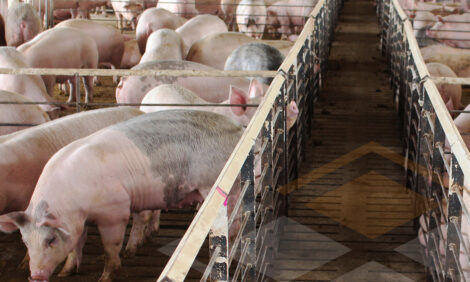



Japan Livestock and Products Semi-Annual 2007
By USDA, Foreign Agricultural Service. This article provides the pork industry data from the USDA FAS Livestock and Products Semi-Annual 2007 report for Japan. A link to the full report is also provided. The full report includes all the tabular data which we have omitted from this article.Report highlights
Japan currently only allows U.S. beef from animals aged 20 months or younger, which severely limits trade. While the Japanese market was partially re-opened in July 2006, imports of U.S. beef only reached 10,458 MT in 2006, a fraction of historic levels. 2007 U.S. beef sales to Japan are forecast at 57,000 MT, primarily due to a limited supply of age-qualified animals in the United States. However, this forecast is highly dependent on policy developments. High beef prices in general will dampen consumption. Pork imports are forecast down 2% to 1.12 million MT in 2007. Increased enforcement of the so called ‘gate price’ system of collecting import duties will continue to limit imports of frozen pork for processing. The Untied States is expected to continue doing a brisk trade in seasoned ground pork for sausages, which falls outside of the ‘gate price’ duty system.
2007 Pork Market Outlook
Japanese Meat Trade Continues Undergoing Adjustments in 2007
Japan’s pork trade in 2007 will continue to be shaped by the increased level of tariff collections and enforcement under the so-called ‘gate price system.’ The system began in 1995 as a mechanism negotiated in the Uruguay Round and strongly resembles a variable levy. If pork meat imports, priced at entry into Japan, are valued at or above the gate price, then they pay a simple tariff of 4.3 percent. If their value is lower than the gate price, the importer must pay the difference between the import value and the gate price as a duty. The 4.3 percent specific duty is then also applied. In practice, the gate price is compared with the average value of the invoice on a shipment, which is usually one or more containers. The system puts disproportionately high tariffs on lower-valued pork cuts.
Legitimate traders carefully mix lower valued cuts, which are in demand by Japan’s meat processing industry, with higher valued cuts so as to come as close as possible to the gate price. However, a common way to evade the duty is by over-invoicing. A broker or a trading company will exaggerate the invoice price so that the value of the shipment meets the gate price and is exempt from the costly variable levy. Japan has taken extraordinary steps in recent years to stem this practice, including holding end users more responsible for ensuring the duty is paid, but fraud still apparently exists. In 2007, we believe increased enforcement will continue to put pressure on imports of lower cost pork for processing and will further stimulate a growing trade in sausage products.
Modest Decline in Total Pork Consumption Forecast in 2007
Total pork consumption in 2007 is forecast down by 2% to 2.404 million MT. Total imports are forecast modestly lower by 2% to 1.121 million MT (Generic Pork; down 3% at One million MT, Prepared and Processed Products; up 10% at 121,000 MT).
The decline is mainly due to modest imports of frozen pork. On the other hand, imports of chilled pork are projected modestly up. This will benefit U.S. and Canadian sales of chilled pork (which tends to be of higher value).
Monthly imports of generic pork, chilled and frozen combined, are estimated at around 83,000 MT on the average through 2007. Year-end stocks are forecast down by 18% to a tight 200,000 MT. Meanwhile, Japanese imports of prepared and processed products will continue to grow, mostly because of expanded sales of seasoned ground pork. Seasoned ground pork is not subject to the gate price system and has a 20% ad valorem duty.
Domestic Slaughter Forecast Lower Slightly in 2007
Domestically, Japan will see a slight decline in hog slaughter numbers, projected at 16.150 million head (or 1.24 million MT). The decline is mainly due to the continued exist from the industry of small and medium scale producers. Forecast household consumption and domestic hog slaughter prices are flat.
Market Opportunities Exist for U.S. (Non-Beef) Sausage Products
Building on last year’s trend, sausage products, mainly from China and other Asian countries, are expected to make continued inroads into the Japanese market. Sausage products are not subject to the gate price system and have a 10% ad valorem duty. Market opportunities exist for U.S. sausage products, keeping in mind that no beef-containing processed products are currently allowed.
No Pork Safeguard Envisaged in JFY 2007
The import pork safeguard is not expected to be triggered in JFY 2007 (See table 9).
2006 Situation Summary
Revised Swine and pork PS&D figures for CY 2005 and 2006 are constructed based on preliminary production, trade, and stock data available to date.Total Pork Consumption Fell Slightly in 2006
In 2006, total pork consumption was down 2% to 2.449 million MT primarily due to a large cut back in the imports of frozen pork. The government’s crack down on illegal pork imports had the effect limiting imports of frozen pork for use in manufacturing processed meat products. As a result, abnormally large stocks declined by 19% to 243,000 MT by-year end (See table 11).
Meanwhile, relatively stable household consumption in 2006 held average wholesale prices of domestic pork unchanged (See table 2 and 10). Also, relatively solid food service sector demand for imported chilled pork led to increases seen in imports of chilled pork from the United States, Canada and Mexico.
Imports of Raw Material Frozen Pork Substantially Lowered in 2006
Total pork imports in 2006 dropped significantly, down 14% from last year to 1.145 million MT.
Generic Pork imports were down to 1.035 million MT, or 17%. Country shares were: United States (35%), Denmark (23%) and Canada (21%). Prepared and Processed pork imports were 110,000 MT, up 22%. Country shares were: United States (61%), Canada (18%), China (13%), (See table 12-a).
Solid increases seen in imports of chilled pork (up 10%) did not offset a large decline in frozen pork imports (down 25%). The frozen pork accounted for about 70% of total generic pork imports. Denmark, the largest supplier (33%) of pork for processing, was most affected by increased gate price enforcement (See table 12-c). Major ham and sausage manufacturers in Japan added increased raw material cost of 5-10% on to their products and consumption of processed products, except bacon, was sluggish throughout 2006. This was also reflected in the household consumption data of processed meat products (See table 2). Chilled pork accounted about 30% of imports with the single largest supplier being the United States (69%), followed by Canada (24%) and Mexico (6%) (See Table 12-b). The United States was a major beneficially in 2006 from Japan’s increased demand for seasoned ground pork, a popular alternative to frozen generic picnic cuts for sausage making.
While not reflected in the PS&D, Japanese imports of sausage products surged 21% from a year ago to 40,695 MT on a customs clearance basis. Imports from China shot up 44% to 26,740 MT followed by U.S. sales of 6,052 MT, which was up 3%. Given continues difficulties of importing inexpensive raw materials, this segment of the trade is expected to expand further in the future.
Domestic Hog Slaughter and Pork Production Sustained in 2006
Slightly smaller sow figures at the year beginning only trimmed domestic hog slaughters slightly to 16.210 million heads (preliminary) and the domestic pork production was flat at 1.247 million MT in 2006.
Further Information
To view the full report, including tables, please click here (PDF Format)
List of Articles in this series
To view our complete list of 2007 Livestock and Products Semi-Annual reports, please click hereMarch 2007






